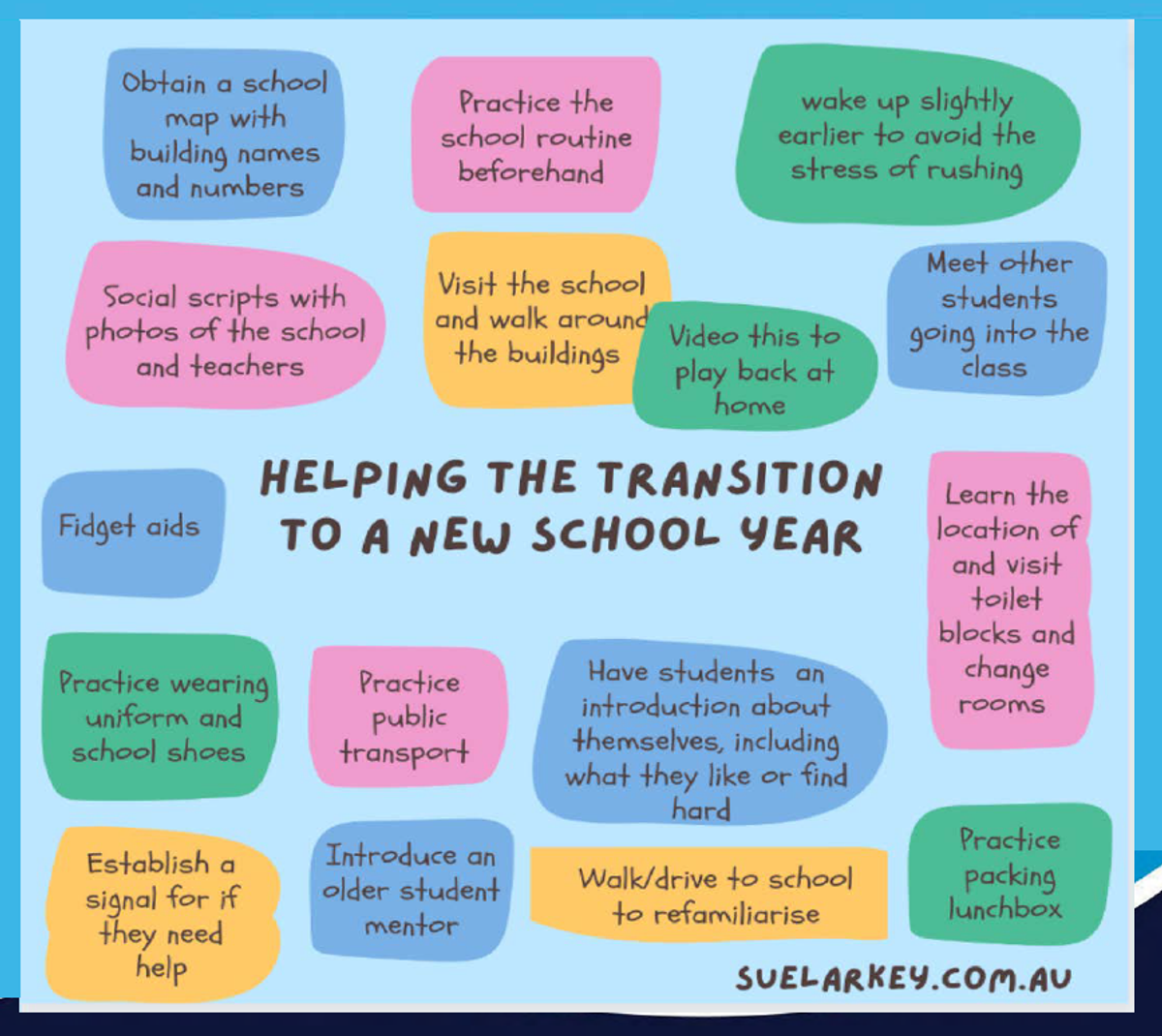Wellbeing
Kim Weissenburger, Assistant Principal
Danielle Wadley, Disability and Inclusion Leading Teache

Wellbeing
Kim Weissenburger, Assistant Principal
Danielle Wadley, Disability and Inclusion Leading Teache


Whether moving into a new year level or starting their journey into high school, transitions are key milestones in a student’s educational journey.
Effective transition processes help students feel secure, confident, and ready to learn. They provide continuity between learning stages, strengthen relationships with peers and teachers, and support students’ social and emotional wellbeing. With a positive transition experience, students are more likely to engage positively with learning, adapt to new expectations, and build a strong foundation for future success.
At Skye, there are a few important transition sessions upcoming for our students.
Transition key dates:
Tues 25th NOV: Years 1-6 Step Up 11:30-1:30PM
Wed 26th NOV: Years 1-6 Step Up 11:30-1:30PM
Tues 9th DEC: Statewide Transition Day. Years 1-6 'Meet the Teacher' session 11:30-1:30PM. Year 6 students to their new Secondary School.
If you would like more tips and advice for a successful transition, please see the attached PDF. 'Transition Tips' by Sue Larkey is a comprehensive guide for parents, teachers, and support staff to help neurodivergent children, especially those on the autism spectrum, manage transitions between school years and other major life stages.
These tips are beneficial still for everyone!
🌱 1. Understanding Transition and Anxiety
🧩 2. Transition Strategies
Practical steps to reduce stress:
🎒 3. Tips for Starting School
Children should practice:
Top tip: invite the student to see their new classroom before the first day.
💗 4. Separation Anxiety Tips
For children struggling with separation: